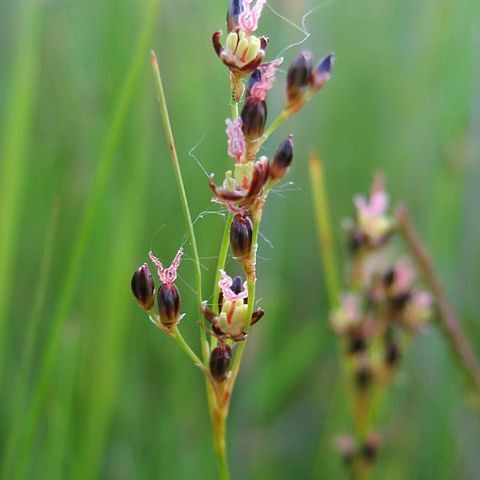Herbs, perennial, 2--9 dm. Rhizomes long-creeping. Cataphylls 1--3. Leaves basal, (1--)2--4; auricles 0.4--0.6(--0.8) mm, scarious; blade flat or somewhat channeled,,10--40 cm x 0.4--0.7 mm, margins entire. Inflorescences 10--30(--80)-flowered, usually loose and somewhat lax, 2--16 cm; primary bract rarely surpassing inflorescence. Flowers: bracteoles 2; tepals dark brown or blackish, lanceolate-ovate to oblong, 2.6--3.2(--3.8) mm; inner and outer series nearly equal, apex obtuse; stamens 6, filaments 0.4--0.7 mm, anthers 1.1--1.6(--1.8) mm; style 0.4 mm. Capsules chestnut brown or brown, 3-locular, widely ellipsoid, (2.2--)2.5--3.2(--3.5) x 1.3 --1.9 mm. Seeds dark brown, ellipsoid to lunate, 0.485--0.6(--0.67) mm, not tailed. 2n = ca. 80, 84.
Fig 18

